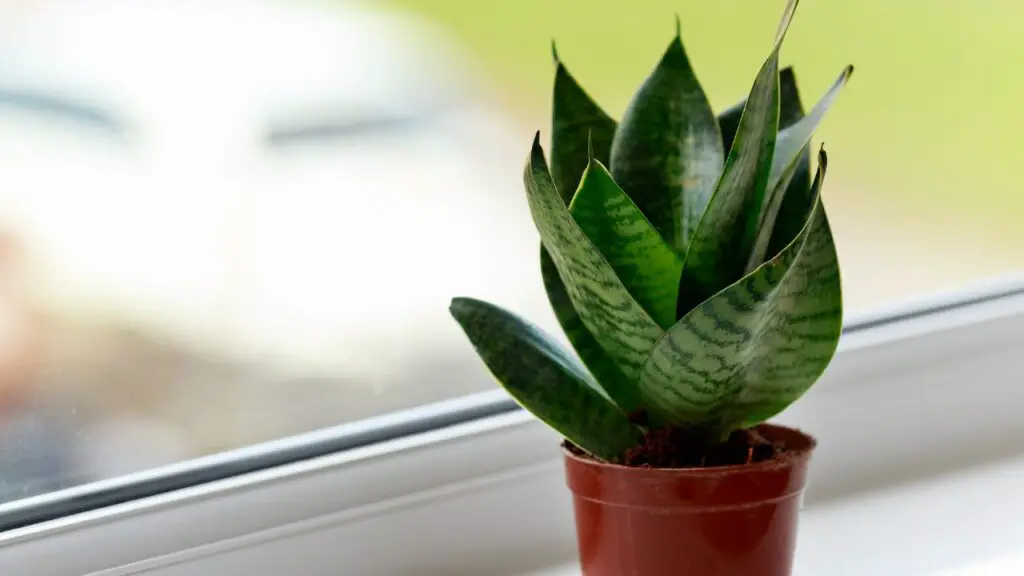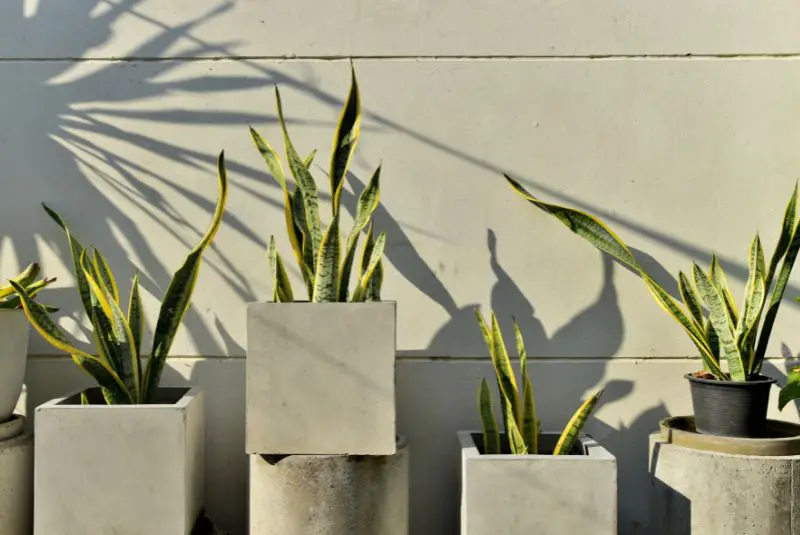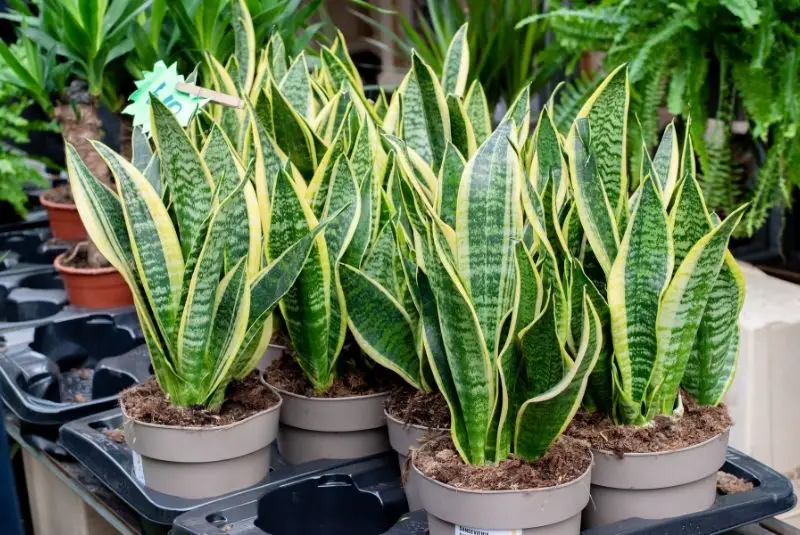Pro Tips For When Your Snake Plant Isn’t Growing
I’ve always been a bit of a plant enthusiast, and let’s be honest, who isn’t these days?
But there’s one green buddy that’s stolen my heart more than any other: the snake plant.
Known for its air-purifying qualities and NASA’s stamp of approval, this sword-like beauty is practically a must-have in any indoor jungle.
Originating from the African subcontinent, it’s as hardy as they come, growing anywhere from 1 to 6 feet tall with minimal fuss. Or at least, that’s what they tell you.
But what happens when your snake plant decides it’s on a growth strike? It’s like it suddenly got cold feet about reaching its full potential.
You’ve watered it, whispered sweet nothings, and even played it some mood music, but still, it sits there, stubbornly not growing.
It’s enough to make you wonder if it’s plotting something.
Why Your Snake Plant Is Not Growing

Common Growth Patterns of Snake Plants
Snake plants, known for their resilience, follow a unique growth pattern.
Typically, these plants grow upwards, sprouting new leaves from the soil that stand tall and proud.
It’s fascinating to observe their upward growth, which can be quite slow.
In ideal conditions, snake plants exhibit a moderate growth rate, adding a few inches to their height each year.
They don’t grow in the standard seasonal spurts that many other plants do.
Instead, their growth can be quite consistent throughout the year if they’re happy with their environment.
Understanding this pattern is key because it sets realistic expectations.
If you’re expecting rapid, lush growth akin to some tropical plants, you might think your snake plant is not thriving when it’s actually growing exactly as it should.
I’ve learned to appreciate their slow and steady pace, recognizing that each new leaf is a sign of success.
Signs of Health in Snake Plants
Identifying signs of health in snake plants is pretty straightforward once you know what to look for.
Healthy snake plants have stiff, upright leaves that boast vibrant green, often with lighter or variegated edges.
The leaves should feel firm and not floppy or mushy.
Mushiness, especially at the base of the leaves, could indicate overwatering issues, a common problem that can undermine your plant’s health and growth.
Another indicator of a healthy snake plant is the emergence of new growth.
You might notice tiny new leaves sprouting from the soil, gradually unfurling and reaching up.
This is a clear sign your snake plant is content with its living conditions. It’s absorbing the right amount of light and nutrients needed to grow.
I’ve also noticed that the root system plays a key role in the health of snake plants.
While it’s not something you can or should check frequently, healthy roots are thick, white, and spread out well in the pot.
Compacted, discolored, or mushy roots suggest health problems that could stifle growth.
Over the years, I’ve realized that less is more with snake plants. They thrive on neglect rather than constant attention.
Ensuring they have bright, indirect light, minimal water, and the right soil conditions goes a long way in promoting their growth.
So, if you’re wondering why your snake plant isn’t growing, it might be time to assess these fundamental aspects of its care.
Key Factors Affecting Snake Plant Growth
Understanding why my snake plant wasn’t reaching its full potential led me to explore several key factors essential for its growth.
Light Exposure and Its Impact
I’ve found that light exposure plays a significant role in the growth of snake plants.
These resilient plants prefer bright, indirect light but can also survive in lower light conditions.
However, too little light can slow down their growth significantly, while too much direct sunlight can scorch their leaves.
It’s a delicate balance, but finding a spot in your home that receives a mix of light and shade throughout the day is perfect.
Rotating the plant occasionally ensures even growth on all sides.
Watering: Finding the Right Balance
When it comes to watering, snake plants demand a less-is-more approach.
They’re drought-tolerant, thanks to their thick leaves that store water.
Overwatering can lead to root rot, the most common issue I’ve encountered with these plants.
The trick is to allow the soil to completely dry out between waterings.
I typically check the topsoil; if it’s dry to the touch, I know it’s time to water.
Less frequent but thorough watering promotes healthy growth without putting the plant at risk of waterlogged roots.
Soil and Pot Requirements
Choosing the right soil and pot is key for a snake plant’s health.
These plants prefer well-draining soil, which prevents water from accumulating around the roots.
I always go for a high-quality potting mix with good drainage properties, avoiding heavy, garden-type soils that can compact over time.
As for the pot, making sure it has adequate drainage holes is a game-changer.
Repotting into a slightly larger pot allows for additional root growth without the risk of overwatering, which I’ve learned is key for encouraging upward growth.
Temperature and Humidity Considerations
Finally, snake plants aren’t too fussy about temperature and humidity, but they do have their limits.
They thrive in temperatures between 55-85°F (13-29°C), which thankfully, are typical indoor temperatures.
However, anything below 50°F (10°C) can cause damage to the plant.
While they can survive in low humidity, I’ve noticed they prefer a bit of moisture in the air.
During dry winter months, a small humidifier or a pebble tray with water can help increase humidity levels around the plant, promoting a more conducive environment for growth.
In exploring these factors, I’ve managed to turn my once-stunted snake plant into a thriving, full-bodied green beauty.
Paying attention to these details makes all the difference in the world to your plant’s health and growth.
Common Growth Issues and Their Fixes

Dealing with Root Bound Plants
I’ve noticed that a common reason for a snake plant’s growth coming to a halt is when it becomes root bound.
This happens when the roots completely fill the pot, leaving no room to expand.
The signs are clear: roots start creeping through the drainage holes, or when you water, it just runs straight through because there’s no soil left to retain the moisture.
My go-to fix is to repot the plant into a slightly larger pot.
I make sure there’s enough room for the roots to breathe and expand but avoid going too large to prevent other issues like overwatering.
Addressing Over and Under Watering
Watering issues are like walking a tightrope with snake plants.
They’re succulents, so they store water in their leaves and prefer to dry out between waterings.
Overwatering is a surefire way to introduce root rot, leading to stunted growth or even plant death.
On the flip side, under-watering can weaken the plant over time.
I’ve found the best approach is to check the soil’s moisture level before watering.
If the top couple of inches of soil feel dry, it’s time to water.
This usually works out to watering my snake plant every 2-3 weeks, depending on the season.
Navigating Temperature Fluctuations
Snake plants prefer consistent temperatures between 55-85°F.
If they’re placed in a spot with cold drafts or direct heat sources, growth can be negatively affected.
In my home, I avoid placing my snake plant near air conditioning in the summer or radiators in the winter.
Sudden temperature changes can stress the plant, so I keep it in a stable environment to promote steady growth.
Combating Pests and Diseases
Pests and diseases can sneak up on the hardiest of snake plants, often manifesting as stunted growth before other symptoms appear.
Spider mites, mealybugs, and fungus gnats are the usual culprits.
At the first sign of trouble, I isolate my plant to prevent the spread to my other green friends.
For pests, a neem oil solution works wonders as a natural insecticide.
If it’s a fungal issue, removing affected soil and replacing it with fresh, sterile potting mix helps.
Regular checks for pests and prompt action at the first sign of an issue are key to keeping my snake plant thriving.
Maintenance Tips for a Thriving Snake Plant
Maintaining a snake plant isn’t hard, but it does require some knowledgeable care to ensure it keeps growing strong and healthy. I
n my experience, focusing on a few key areas can make all the difference.
The Right Way to Fertilize
I’ve learned that less is often more when it comes to fertilizing snake plants.
These hardy plants don’t need much to flourish.
During the growing season, which is from spring to fall, I fertilize my snake plant about once a month with a half-strength balanced fertilizer.
It’s key to avoid over-fertilizing, as this can harm the plant more than help it.
In winter, when the plant’s growth naturally slows down, I stop fertilizing altogether to avoid overwhelming the plant during its rest period.
When and How to Repot
Repotting plays a key role in a snake plant’s growth and health.
I typically check my snake plant every couple of years to see if it’s becoming root-bound.
If the roots are starting to circle the bottom of the pot or peek out from the drainage holes, it’s time for a new home.
I prefer to do this in the spring, using a pot that’s only slightly larger than the previous one.
This way, there’s enough room for growth, but not so much that the soil stays wet for too long, which could lead to root rot.
After repotting, I wait a week before watering to let the plant settle in and prevent any potential root damage.
Preventing Physical Damage
Keeping a snake plant out of harm’s way might seem straightforward, but it’s easy to overlook the small things that can lead to damage.
For instance, I’m careful to place mine away from areas with heavy foot traffic where it might get bumped or knocked over.
Also, it’s important to keep it out of direct, harsh sunlight, which can scorch the leaves, causing them to lose their vibrant color.
Rotating the plant periodically ensures each side receives equal light, promoting even growth and preventing the plant from leaning towards the light source.
By following these maintenance tips, I’ve seen noticeable improvements in the health and growth of my snake plants.
Advanced Care Strategies

Propagating Your Snake Plant
When my snake plant stopped showing signs of growth, I realized it might be time to propagate.
Propagation not only rejuvenates the plant but can also help in troubleshooting growth issues by giving you new, healthy plants to work with. I’ve found the simplest and most effective method for snake plants is division.
This technique involves carefully separating the plant’s root ball into smaller sections, each with a few leaves and roots intact.
I then plant these directly into their pots, ensuring they’re not too deep to prevent rot.
Another method I’ve experimented with is leaf cuttings.
I’ll cut a healthy leaf into 3 to 4-inch sections, let them callous over for a day or two, and then plant them about an inch deep in moist, well-draining soil.
It’s essential to keep the soil moist but not wet, and in a few weeks to months, you should see new growth.
I’ve learned patience is key here; it can take a while, but it’s incredibly rewarding when those tiny shoots start to emerge.
Selecting Snake Plant Varieties
Choosing the right snake plant variety can make a significant difference in growth and appearance.
I’ve grown several types over the years, and each has its unique charm.
For instance, Sansevieria trifasciata, also known as the ‘Mother-in-Law’s Tongue,’ has tall, upright leaves that can add a dramatic flair to any room.
Its growth is relatively predictable, making it easier to manage in terms of space and care.
For those with limited space, Sansevieria Hahnii, known as the ‘Bird’s Nest,’ is a fantastic option.
It grows in a rosette pattern and reaches only about 6 inches tall, perfect for desks or small shelves.
On the adventurous side, Sansevieria cylindrica, with its round, spear-like leaves, can add a unique sculptural element.
Its leaves can grow several feet in length, arching gracefully from the plant’s base. This variety requires a bit more room to sprawl but is worth it for the visual impact.
When selecting snake plant varieties, consider your space, lighting conditions, and how much attention you’re willing to give your plants.
Each variety has its own light and water preferences, but generally, snake plants are forgiving and adapt well to indoor environments.
Experimenting with different types can bring not just growth, but also a rewarding diversity to your collection.
